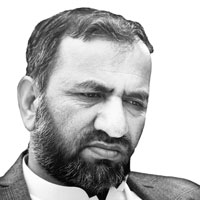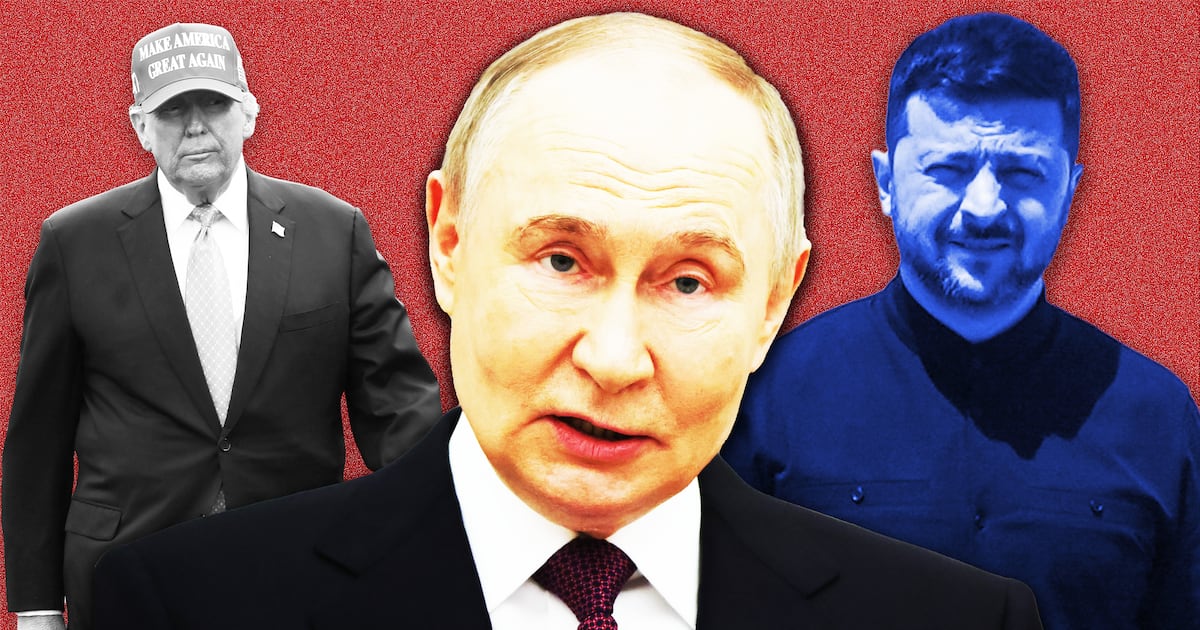ISLAMABAD, Pakistan—Soon after U.S. President Donald Trump finished his prime-time address to the United States sketching his plans for the endless Afghan war, a spokesman for the Afghan Taliban—the enemy—stated the obvious.
“The whole speech was old,” Zabiullah Mujahid told The Associated Press. The focus on terrorists, the futility of nation building, those have been Washington mantras for a decade a more. But it would take the Taliban a while to respond in detail because, well, Trump’s outline of his policy was “unclear.”
Perhaps the Taliban, the radical Islamist extremist erstwhile rulers of Afghanistan, now on the comeback trail, were puzzled by the lack of details in Trump’s speech—like how many American troops he planned to commit to the non-nation-building, non-occupation of Afghanistan. Or, perhaps, they were just befuddled by the historical, geographical, political, economic, and social obliviousness of it.
In fact, with his accustomed truculence, Trump has sketched a plan to turn the Afghan war and the Af-Pak problem into a regional conflict involving several parties who would like to see the United States not only diminished, but humiliated, including China, Russia, and Iran.
Trump is convinced that Pakistan is the problem in Afghanistan, often giving “safe haven to agents of chaos,” and that is partly true. He seems to think that India can be brought in as Washington’s new, key ally in the fight. Pakistan would then be forced to give up its covert connections to various terror organizations and the Afghan Taliban, lest the United States cut off aid it has given Pakistan that has amounted to some $21 billion since 2001.
The U.S. president basically told Pakistan: “You are with us or with the Taliban, and Pakistan has to choose its option,” a senior diplomat in Islamabad told The Daily Beast, “but dealing with Pakistan is not easy.”
Adding insult to injury, and raising the stakes, Trump implied Pakistan might share its nuclear arsenal with terrorists.
There is no mention of the fact that whenever the United States has had large numbers of troops in Afghanistan, the massive logistical support for them came in through Karachi—in Pakistan. There was scant acknowledgment that Pakistan has worked closely with the United States to stop terror attacks and arrest wanted killers. And there was no consideration at all for what Pakistan may see as its own national security priorities.
In fact, Islamabad’s greatest interest in Afghanistan is not in supporting the Taliban as such, it’s in making sure that India does not establish a presence in Afghanistan that would threaten Pakistan from the northwest while India itself threatens from the southeast. The Taliban were built up in the 1990s to play just that role, and might do the same if they take power again, whether on the battlefield or in negotiations.
It’s possible Trump’s advisors thought the India shout-out would get Islamabad’s attention, and it certainly will. But Trump appears to have announced the Indian wedding before talking to the bride, and his tone was not one of cooperation so much as coercion, using his usual transactional “art of the deal” analysis:
“We appreciate India's important contributions to stability in Afghanistan, but India makes billions of dollars in trade with the United States, and we want them to help us more with Afghanistan, especially in the area of economic assistance and development.” The implication is an unspecified “or else.”
Meanwhile, Trump made no mention of Iran, a major player in Western Afghanistan that would have no reason to do Trump any favors at this point.
And there was not the slightest nod to China, which has its own ambitions in the region, and currently has its troops poised, guns at the ready, facing down India on the brink of war where the frontiers of Bhutan, India, and China come together. Previously, the “America First” crowd might have said Washington doesn’t have a dog in that fight. Now it just might.
As for Russia, as recently as last month American and Afghan officials claimed that Moscow was supplying the Taliban with small arms in Afghanistan—ostensibly to fight the so-called Islamic State there. But guns turned in one direction can be turned in the other. The Kremlin, for its part, denied it was doing any such thing.
Inayatullah Kakar, who was editor of The Kabul Times newspaper when the Taliban ruled in the Afghan capital, noted several key problems in Trump’s speech.
Among them, Pakistan is growing closer to China and Russia, and by choosing India as a new strategic ally, Trump will make that Islamabad, Beijing, Moscow bond even tighter.
“If China is engaged in any kind of further confrontation with India, Pakistan can never enjoy neutrality and will definitely take the side of China,” said Kakar. “The United States, as a rival power to China, will support India—and this will turn Pakistan into a nuclear rival of the United States.”
Agah Muhammad, a Taliban commander in the field in Helmand province, notes that his group has been fighting since 1994 to establish an Islamic state in Afghanistan, long before any American forces were there.
“I won’t give up my gun if Trump sends more troops, or if he pulls out the current soldiers,” said Aga Muhamad.
The Daily Beast asked him if he knew how many troops Trump is thinking of sending to Afghanistan. (The commonly cited figure is 4,000.)
“I don’t know the numbers,” said Muhamad, “and it does not really matter, either.”
The war will go on. Afghanistan will remain the home of the Taliban, and Americans—and Afghans—will continue to wonder why U.S. troops are there at all.
Sami Yousafzai reported from Islamabad, Christopher Dickey reported from Paris.






